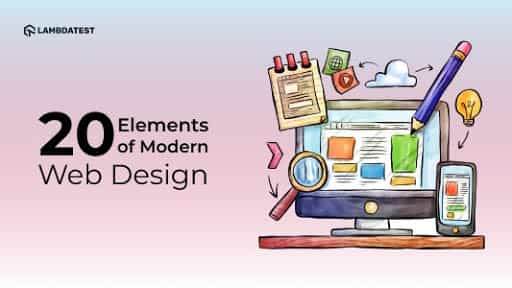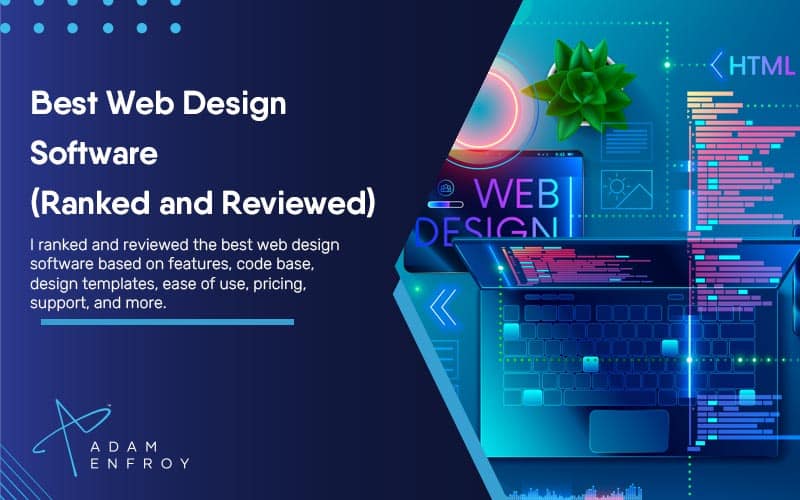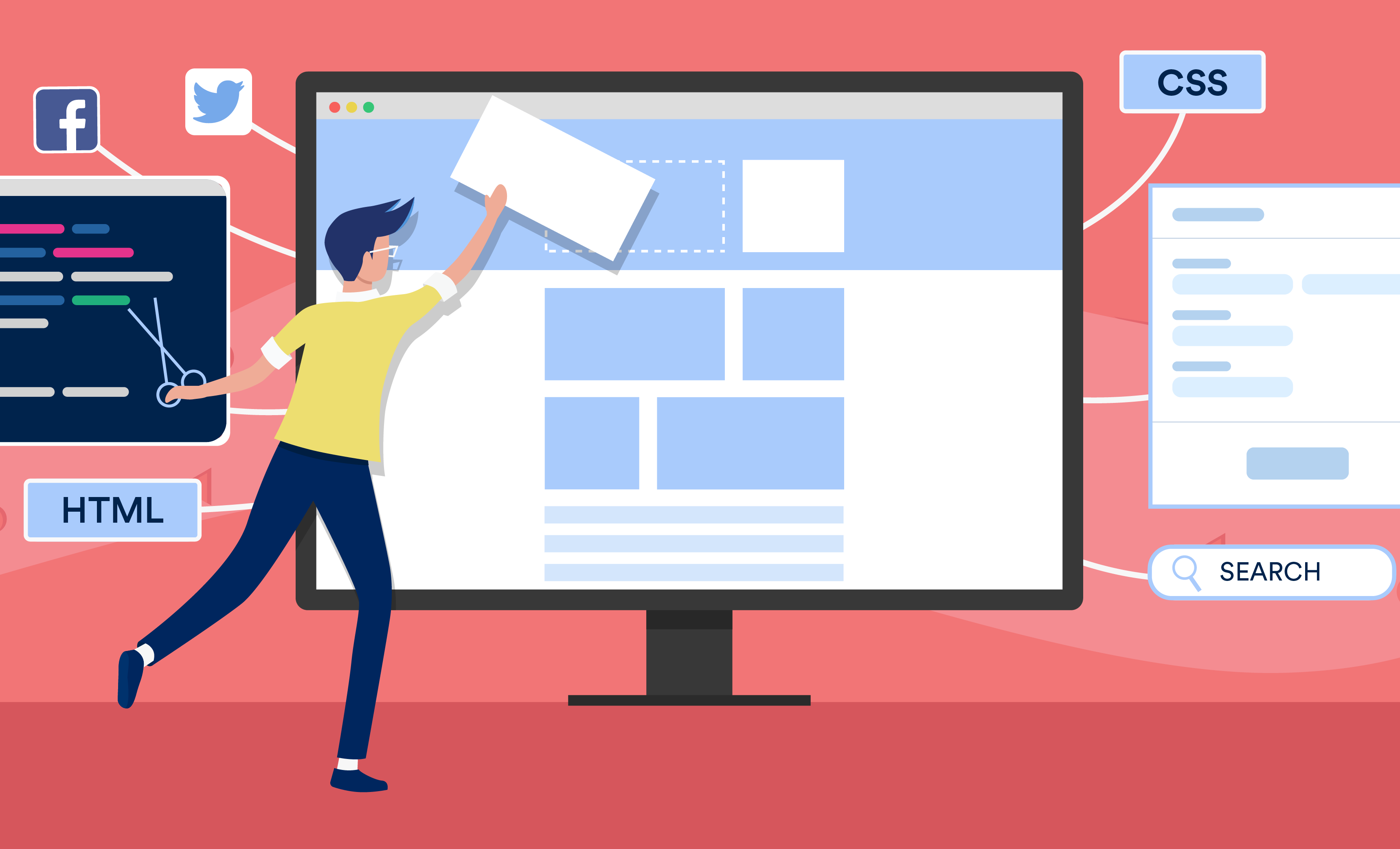All Categories
Featured
Table of Contents
- – Web Design - Website Design Tutorials, Article...
- – Web Design - Website Design Tutorials, Articl...
- – Redtree Web Design - Pittsburgh Tips and Tric...
- – Chavez Web Design: Web Design San Diego - Bak...
- – What Is A Web Designer? (2022 Guide) - Brains...
- – Trajectory: Atlanta Web Design Company Tips a...
- – Why Is Web Design Important? - 6 Reasons To ...
- – Arch Web Design: Top-rated Web Design Agency...
- – Law Firm Website Design, Attorney Web Design...
- – Top Web Design Agencies Ranked - 2022 Review...
- – Responsive Design Best Practices - Google Se...
Web Design - Website Design Tutorials, Articles And Free Stuff Tips and Tricks:
Quick summary Usability and the utility, not the visual design, identify the success or failure of a site. Since the visitor of the page is the only individual who clicks the mouse and for that reason chooses whatever, user-centric style has established as a standard method for effective and profit-oriented website design - web design frederick md.
and the energy, not the visual design, figure out the success or failure of a website. Because the visitor of the page is the only person who clicks the mouse and therefore chooses everything, user-centric style has actually ended up being a basic method for effective and profit-oriented website design. After all, if users can't use a function, it may too not exist.
g. where the search box must be positioned) as it has already been performed in a variety of posts; rather we concentrate on the approaches which, used effectively, can result in more sophisticated style choices and streamline the procedure of viewing presented info. Please notice that you might be thinking about the usability-related posts we've published before: Principles Of Excellent Site Design And Reliable Web Design Guidelines, In order to utilize the concepts effectively we initially need to understand how users communicate with websites, how they believe and what are the basic patterns of users' behavior.
Web Design - Website Design Tutorials, Articles And Free Stuff Tips and Tricks:
Visitors glance at each brand-new page, scan some of the text, and click on the very first link that catches their interest or vaguely looks like the important things they're looking for. There are large parts of the page they do not even look at. Most users search for something intriguing (or beneficial) and clickable; as quickly as some appealing candidates are discovered, users click.
If a page supplies users with top quality material, they are ready to jeopardize the material with ads and the design of the site. This is the reason not-that-well-designed websites with top quality material get a great deal of traffic over years. Content is more important than the design which supports it.

Very simple concept: If a site isn't able to satisfy users' expectations, then designer stopped working to get his job done appropriately and the business loses cash. The greater is the cognitive load and the less user-friendly is the navigation, the more prepared are users to leave the website and search for alternatives.
Redtree Web Design - Pittsburgh Tips and Tricks:
Neither do they scan website in a direct fashion, going sequentially from one site area to another one. Rather users satisfice; they choose the first affordable option. As quickly as they find a link that appears like it might lead to the goal, there is an excellent chance that it will be instantly clicked.
It doesn't matter to us if we understand how things work, as long as we can utilize them. If your audience is going to act like you're creating billboard, then design excellent signboards." Users want to be able to manage their web browser and count on the consistent data discussion throughout the site.
If the navigation and website architecture aren't instinctive, the number of enigma grows and makes it harder for users to understand how the system works and how to get from point A to point B. A clear structure, moderate visual ideas and easily recognizable links can assist users to find their course to their aim.
Chavez Web Design: Web Design San Diego - Bakersfield ... Tips and Tricks:

claims to be "beyond channels, beyond items, beyond circulation". What does it suggest? Since users tend to check out websites according to the "F"-pattern, these 3 declarations would be the first elements users will see on the page once it is loaded. The design itself is basic and instinctive, to comprehend what the page is about the user requires to browse for the answer.
As soon as you've attained this, you can communicate why the system is useful and how users can benefit from it. Do Not Waste Users' Persistence, In every project when you are going to use your visitors some service or tool, attempt to keep your user requirements very little.
First-time visitors are prepared to, not filling long web forms for an account they might never ever utilize in the future. Let users explore the website and find your services without forcing them into sharing private information. It's not affordable to force users to enter an email address to check the function.
What Is A Web Designer? (2022 Guide) - Brainstation® Tips and Tricks:
Stikkit is an ideal example for an user-friendly service which requires practically absolutely nothing from the visitor which is inconspicuous and comforting. Which's what you desire your users to feel on your web site. Apparently, Mite requires more. The registration can be done in less than 30 seconds as the form has horizontal orientation, the user does not even need to scroll the page.
A user registration alone is sufficient of an obstacle to user navigation to cut down on inbound traffic. Manage To Focus Users' Attention, As sites provide both static and dynamic content, some elements of the user interface attract attention more than others do.
Focusing users' attention to specific areas of the site with a moderate use of visual elements can assist your visitors to get from point A to point B without thinking of how it really is expected to be done. The less question marks visitors have, the they have and the more trust they can develop towards the company the website represents.
Trajectory: Atlanta Web Design Company Tips and Tricks:
4. Pursue Function Direct exposure, Modern web styles are typically slammed due to their method of guiding users with visually appealing 1-2-3-done-steps, large buttons with visual effects and so on. However from the design point of view these components in fact aren't a bad thing. On the contrary, such as they lead the visitors through the site content in an extremely simple and user-friendly method.
The website has 9 main navigation choices which are visible at the first glance. The choice of colors may be too light, though. is a basic concept of successful user interface design. It doesn't truly matter how this is attained. What matters is that the content is well-understood and visitors feel comfy with the way they interact with the system.
Rather a price: simply what visitors are looking for. An optimum option for effective writing is touse short and succinct phrases (come to the point as rapidly as possible), use scannable layout (categorize the material, use numerous heading levels, utilize visual components and bulleted lists which break the flow of uniform text blocks), use plain and objective language (a promo doesn't require to sound like advertisement; offer your users some reasonable and unbiased factor why they need to utilize your service or stay on your website)6.
Why Is Web Design Important? - 6 Reasons To Invest In Site ... Tips and Tricks:
Users are seldom on a website to enjoy the design; additionally, most of the times they are searching for the info despite the style - web design frederick md. Aim for simplicity instead of intricacy. From the visitors' perspective, the finest website design is a pure text, with no ads or more material obstructs matching exactly the question visitors utilized or the material they've been looking for.
Finch clearly provides the info about the site and gives visitors a choice of alternatives without overcrowding them with unneeded material. Not just does it help to for the visitors, but it makes it possible to perceive the information presented on the screen.
Complex structures are more difficult to check out, scan, analyze and work with. If you have the option between separating 2 style sections by a visible line or by some whitespace, it's normally much better to use the whitespace service. (Simon's Law): the much better you manage to provide users with a sense of visual hierarchy, the simpler your content will be to view.
Arch Web Design: Top-rated Web Design Agency For Saas ... Tips and Tricks:
The exact same conventions and guidelines ought to be used to all elements.: do the most with the least quantity of cues and visual elements. Clearness: all elements should be developed so their meaning is not uncertain.
Conventions Are Our Good friends, Conventional design of site elements doesn't lead to an uninteresting website. In reality, as they reduce the learning curve, the need to find out how things work. For example, it would be a functionality headache if all sites had different visual presentation of RSS-feeds. That's not that different from our routine life where we tend to get utilized to standard concepts of how we arrange data (folders) or do shopping (placement of items).
comprehend what they're anticipating from a website navigation, text structure, search positioning etc. A typical example from use sessions is to equate the page in Japanese (assuming your web users don't know Japanese, e. g. with Babelfish) and supply your functionality testers with a job to find something in the page of various language.
Law Firm Website Design, Attorney Web Design, Lawyer ... Tips and Tricks:
Test Early, Test Often, This so-called TETO-principle needs to be applied to every web style task as use tests often supply into significant issues and problems related to an offered design. Test not too late, not too little and not for the incorrect reasons.
Some important points to remember: according to Steve Krug, and testing one user early in the project is better than screening 50 near completion. Accoring to Boehm's very first law, mistakes are most regular throughout requirements and style activities and are the more costly the later they are eliminated.
That suggests that you design something, test it, repair it and then test it once again. There may be problems which have not been discovered during the very first round as users were almost obstructed by other issues. use tests. Either you'll be indicated the problems you have or you'll be pointed to the absence of significant style defects which is in both cases a helpful insight for your project.
Top Web Design Agencies Ranked - 2022 Reviews - Clutch.co Tips and Tricks:

This holds for designers too. After you've dealt with a website for few weeks, you can't observe it from a fresh point of view anymore. You understand how it is built and for that reason you know precisely how it works you have the knowledge independent testers and visitors of your site would not have.
It can be connected to other locations such as graphic style, user experience, and multimedia arts, however is more appropriately seen from a technological perspective. It has become a large part of people's everyday lives. It is hard to picture the Web without animated graphics, various styles of typography, background, videos and music.

Throughout 1991 to 1993 the Web was born. Text-only pages could be viewed utilizing an easy line-mode browser. In 1993 Marc Andreessen and Eric Bina, created the Mosaic internet browser. At the time there were multiple internet browsers, however the majority of them were Unix-based and naturally text heavy. There had been no integrated method to graphic style components such as images or sounds.
Responsive Design Best Practices - Google Search Central Tips and Tricks:
The W3C was produced in October 1994 to "lead the Web to its full capacity by developing common protocols that promote its evolution and guarantee its interoperability." This discouraged any one company from monopolizing a propriety internet browser and programs language, which could have altered the effect of the Internet as a whole.
As this has taken place the technology of the web has actually likewise moved on. There have actually also been significant changes in the way people utilize and access the web, and this has actually changed how sites are created. Given that the end of the internet browsers wars [] new browsers have been launched. Many of these are open source suggesting that they tend to have much faster development and are more helpful of new requirements.
Learn more about Lovell Media Group LLC or TrainACETable of Contents
- – Web Design - Website Design Tutorials, Article...
- – Web Design - Website Design Tutorials, Articl...
- – Redtree Web Design - Pittsburgh Tips and Tric...
- – Chavez Web Design: Web Design San Diego - Bak...
- – What Is A Web Designer? (2022 Guide) - Brains...
- – Trajectory: Atlanta Web Design Company Tips a...
- – Why Is Web Design Important? - 6 Reasons To ...
- – Arch Web Design: Top-rated Web Design Agency...
- – Law Firm Website Design, Attorney Web Design...
- – Top Web Design Agencies Ranked - 2022 Review...
- – Responsive Design Best Practices - Google Se...
Latest Posts
The Top 10 Most Important Elements Of A Website Design Tips and Tricks:
53 Web Design Tools To Help You Work Smarter In 2022 Tips and Tricks:
10 Principles Of Good Web Design - Smashing Magazine Tips and Tricks:
More
Latest Posts
The Top 10 Most Important Elements Of A Website Design Tips and Tricks:
53 Web Design Tools To Help You Work Smarter In 2022 Tips and Tricks:
10 Principles Of Good Web Design - Smashing Magazine Tips and Tricks: